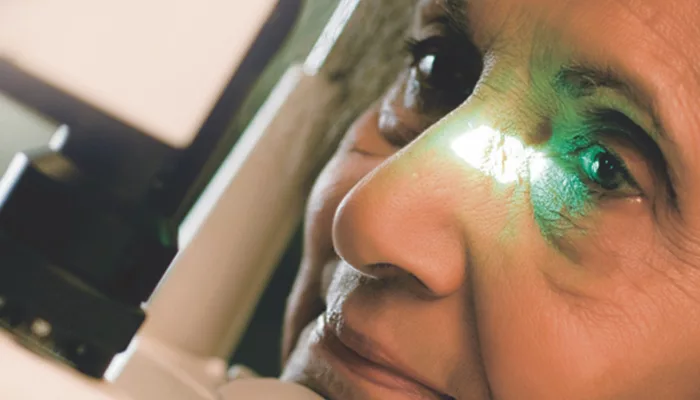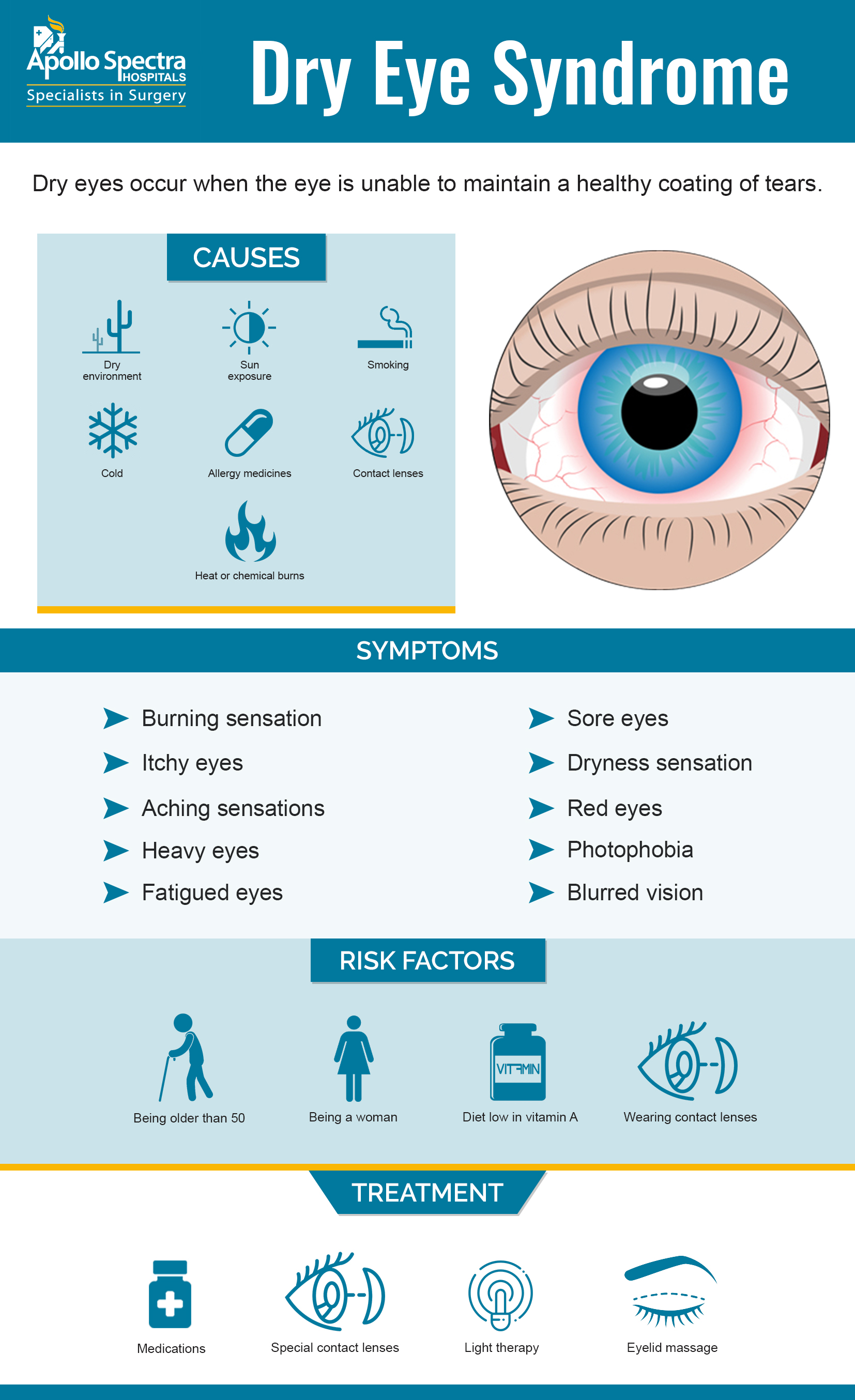How common is Dry Eye Syndrome
August 23, 2019
Dry eye is a condition of the eyes that results in quick evaporation of tears or less tear production. It is a very common eye disorder that can affect both the eyes resulting in inflammation. It is more common in women and people above the age of 40.
Dry Eyes Causes
When you are experiencing an emotion or yawning, your eyes start to produce tears. Tears contain fatty oils, electrolytes, protein, and water to help fight off the bacteria. It also keeps the surface of the eyes smooth and clear. It also helps in keeping the tear film stable. The tear film is a fluid that covers healthy eyes. They remain stable between the blinks. This prevents the eye from becoming dry and provides clear vision. If anything hinders this production, the tear film will get unstable, resulting in its break down and creation of dry spots on the eyes’ surface. Dry eyes can be caused due to:
-
Fast evaporation of tears due to an imbalance in the mixture
The tear film is made of water, oil, and mucus. The oil comes from meibomian glands present at the edge of the eyelids. This oil slows down the evaporation rate and smooth out the tear surface. If these levels are faulty, it can cause quick evaporation of tears. The next layer is of salt and water produced by the lacrimal glands, also known as tear glands. They wash away the irritants and particles and cleansing the eyes. If this layer is too thin, the mucus and oil layer can touch each other causing stringy discharge. The last layer, the mucus layer allows the tears to spread over the eyes evenly. Any instability to this layer can cause dry patches.
-
Insufficient tear production
It is natural for tear production to fall after the age of 40 years. When it reaches a certain level, it can cause eyes to become dry, inflamed, and irritated. Women are more prone to this due to the hormonal imbalance caused after the menopause. Other reasons for reduced tear production include radiation treatment, autoimmune diseases (Lupus, Rheumatoid arthritis, Sjogren’s syndrome, and scleroderma), vitamin A deficiency, diabetes, or refractive eye surgeries like LASIK.
Every single time you blink, a thin film of tears is spread across by the eyelids. So, a problem with eyelids can lead to a problem with the tear film. Ectropion is one such condition where the eyelids turn outwards where it should turn inwards.

Here are some medications that can cause dry eyes:
- Diuretics
- Anti-histamines
- Angiotensin,-converting enzyme (ACE) inhibitors
- Birth control pills
- Sleeping pills
- Decongestants
- Acne drugs
- Opiate-based painkillers
- Antidepressants
Symptoms
A person with Dry Eye syndrome will experience the following symptoms:
- Stinging, burning, soreness, grittiness, and dryness in the eyes
- Sensitivity to smoke or wind
- Redness
- Stingy mucus in the eyes
- Feeling like there is sand in the eyes
- Blurred vision
- Eye fatigue
- Difficulty in opening the eyes
- Discomfort in wearing lenses
- Sensitivity to light
- Double vision
- Tearing
For some, the pain is too much to bear leading to anxiety, frustration, and difficulty in functioning day-to-day tasks.
Treatment
A physical examination is required to check for the dry eye syndrome. The test will reveal the quantity of tears produced by the eyes and determine if the tear film is functioning properly or not. During the treatment, it is of paramount importance that the eyes are kept well lubricated. Here is how you can do that:
- Using eye drops or artificial tears
- Using natural tears
- Reducing train drainage
If the dry eyes are caused due to an underlying condition like psoriasis or eye infection, it must be treated first. There are several medications used for treating chronic dry eyes like Restasis or cyclosporine eye drops.
NOTICE BOARD
CONTACT US
CONTACT US
 Book Appointment
Book Appointment


.svg)
.svg)
.svg)
.svg)








